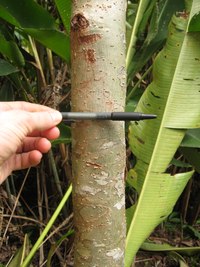Indigenous land rights: is modernization the answer?
/ An indigenous woman in Arimae mixes jagua inkIn an article entitled “Can Free Market Economics Boost Amazonian Land Rights?” Peruvian economist Hernando de Soto proposes that modern property rights are the key to propelling indigenous communities with communal land out of poverty. He believes that breaking up collective lands and establishing individual titles will enable community members to gain access to capital and credit, allowing them to become part of the global economy.
An indigenous woman in Arimae mixes jagua inkIn an article entitled “Can Free Market Economics Boost Amazonian Land Rights?” Peruvian economist Hernando de Soto proposes that modern property rights are the key to propelling indigenous communities with communal land out of poverty. He believes that breaking up collective lands and establishing individual titles will enable community members to gain access to capital and credit, allowing them to become part of the global economy.
Indigenous communities like our partner Arimae utilize collective land ownership to ensure the economic, social, and cultural way of life for all members of the community. Even with established titles from their national governments, Indigenous groups worldwide are at risk from outsiders appropriating their natural resources for their own gain.
The problem is not the absence of land titles, but the deficiency of the State in enforcing collective ownership as equal to that of private ownership.
Land titles are important because they eliminate issues of ownership and create an indisputable definition of property rights. As a fundamental piece of the Equitable Forestry model, our partners provide proof of land ownership before any contracts are signed or planting takes place.
We strive to work with individuals who have a long term vision of cultivating their land in a sustainable manor while maintaining the area’s rich biodiversity. These tenets are inherent in indigenous cultures with communal lands which is why we support their struggle to obtain equal property rights and maintain control of their land.





